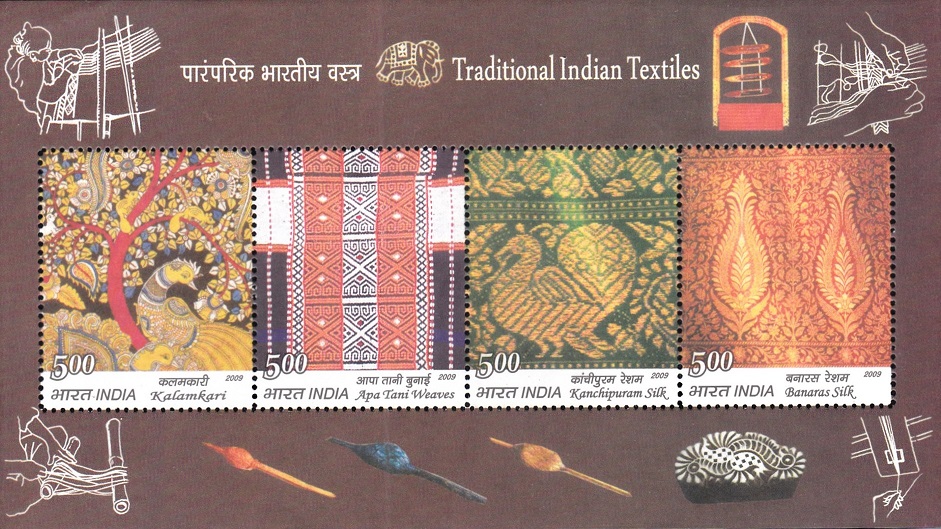
Traditional Indian Textiles 2009
A Miniature Sheet consisting of 4 nos of commemorative postage stamps on the Traditional Textiles of India : Kalamkari, Apa Tani Weave, Kanchipuram Silk and Varanasi Brocades :
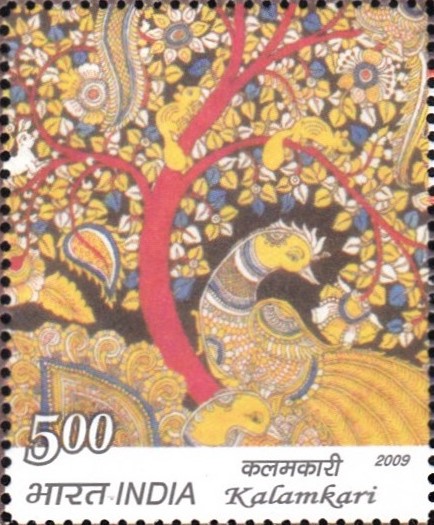
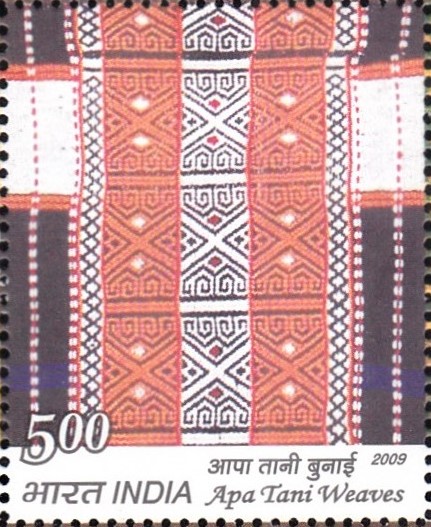

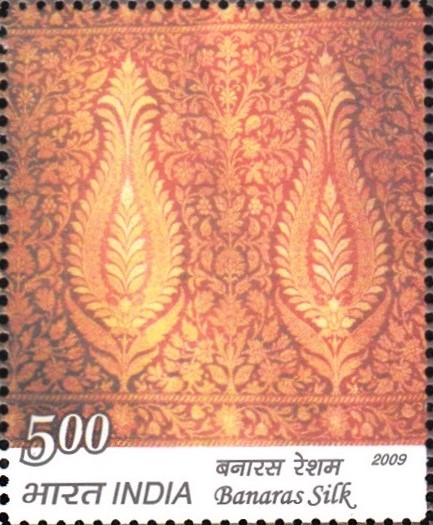

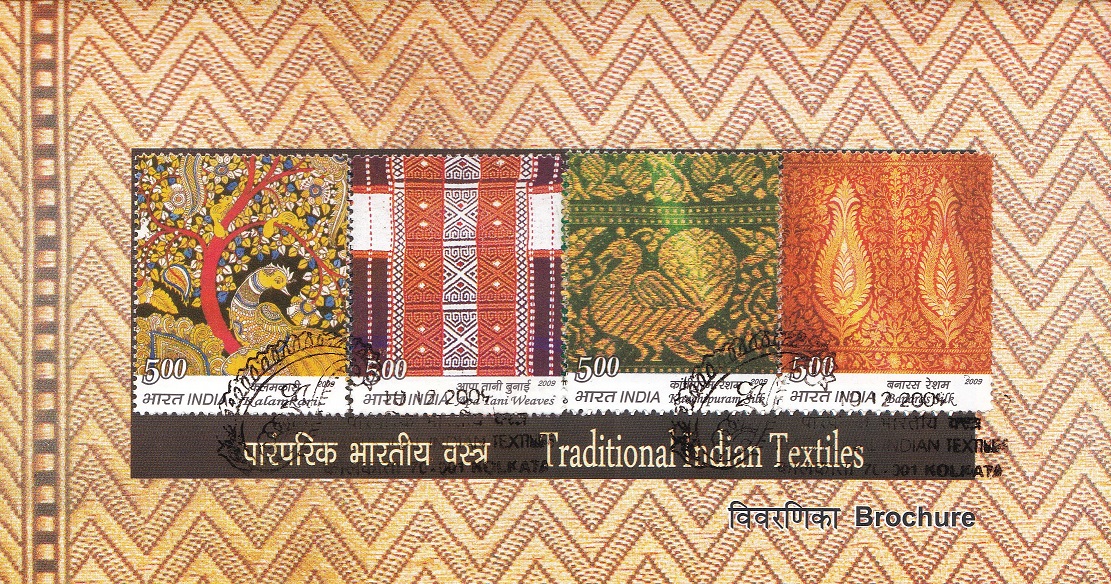 Issued by India
Issued by India
Issued on Dec 10, 2009
Issued for : The Government of India has taken several initiatives for the development and promotion of the hand loom sector, introducing five comprehensive schemes during the 11th Five Year Plan to: the Integrated Handlooms Development Scheme for developing Handloom Weaver Groups to be sustainable with skill upgradation and diversified products; the Handloom Weavers Comprehensive Welfare Scheme which provides insurance coverage in case of accidents, disability or death; the Marketing and Export Promotion Scheme to build awareness and publicity and provide brand development and financial assistance; the Mill Gate Price Scheme to make all types of yarn available at appropriate rates; and the Diversified Handloom Development Scheme which focuses on design development, skill upgradation, training, R&D etc.
The Department of Posts celebrates India’s heritage of textiles through this set of postage stamps.
Credits :
Stamp & FDC : Sankha Samanta
Cancellation : Alka Sharma
Type : Miniature Sheet, Mint condition
Colour : Multi colour
Denomination : 500 Paise each
Stamps Printed : 0.8 Million each
Sheetlet : 0.4 Million
Miniature Sheets : 0.4 Million
Printing Process : Wet–offset
Printer : India Security Press, Nasik
About :
- India has a rich tradition in textile production spanning almost 5000 years. The materials and techniques vary with geo-climatic conditions, traditions and history. Each reflects a marvel of the creative minds and hands that have worked anonymously to create a masterpiece. Four are depicted on the set of postage stamps.
- Kalamkari :
- The term means pen work and denotes the painted and printed textiles of Andhra Pradesh. They belong to two distinct schools : the Masulipatnam ones patronized by Muslim rulers and the Sri Kalahasti ones by Hindu temples. The former are influenced by Persian paintings and the tenets of Islam; the latter reproduce scenes from Hindu mythology. The pen was often replaced by blocks for the repetitive patterns at Masulipatnam while Kalahasti continues to use the ‘kalam‘ as the main tool. The Kalamkari paintings also play an important role in the rural life of Andhra Pradesh, its rituals and ceremonies. The craft has stood the test of time and shown an adaptability to change.
- Apa Tani Weaves :
- The Apa Tani inhabit the lower Subansiri district of Arunachal Pradesh, in North East India. The women weave primarily for their own households – a tradition that is passed down from mother to daughter. Almost every family possesses one or two looms. The loom, a single heddle, reed less, loin loom, is small, simple, portable and easy to operate. It is a family heirloom only inherited by the women. The weaving is done in plain weave or tabby and the patterning is done using the extra weft technique. The traditional Apa Tani colours are red, green and yellow, all obtained from leaves, roots, creepers and the bark of trees. Now dyed yarn is available in a variety of colours. The ordinary Apa Tani cloth gets its character from the use of broad stripes alternating with narrow ones and an inexhaustible variety of geometric patterns achieved with the extra weft technique.
- Kanchipuram Silks :
- The figured and brocaded silk-woven saris of Kanchipuram in Tamil Nadu are as famous as the temples of this centre for Hindu pilgrimage. Ancient southern texts date the rich silks to the 2nd century, though many attribute the origin of the craft to the migration of weavers at different periods. The silk industry grew with royal and temple patronage and trade facilitated by the river Palar and produced temple cloths, wall hangings and chariot decorations, furnishings and the nine-yard sari. The weaving of a Kanchipuram Sari is a slow process done on a throw shuttle pit loom or a raised pit loom. The process requires two weavers to work together with three shuttles while the designer reads out the graph to facilitate the lifting order of threads. Now jacquard and dobby machines are also being used. The saris have a distinctive style, combining simple borders and grounds in rich contrasting colours with elaborate patterns woven with rows of animals, birds, flowers and creepers or geometric patterns. The silk is compact, thick and richly textured due to the use of twisted three-ply yarn. The use of colour and the lustre of the silk give Kanchipuram Silks their identity.
- Varanasi Brocades :
- Varanasi, also called Banaras and Kashi, in Uttar Pradesh has been a cultural and religious centre for centuries, its lifeline being the sacred river Ganga. Its fame, apart from its temples, musicians etc. rests on the brocades and the versatile Varanasi draw loom. There are different views on the introduction of the draw loom into India. It is a complex hand loom for weaving figured textiles of great complexity and width. Designs or “naqshas” form the basis of the pattern woven. In brocade – weaving, extra weft threads of different coloured silk or zari, metallic threads, are woven into the base fabric in areas where they are to form a pattern. The brocades vary in the use of fabric, the type of metallic thread used and the silk or cotton yarn used. Today most commonly mulberry silk from Karnataka and from Bengal is used, as also imports from China.
- Text : Based on material given by the Ministry of Textiles.


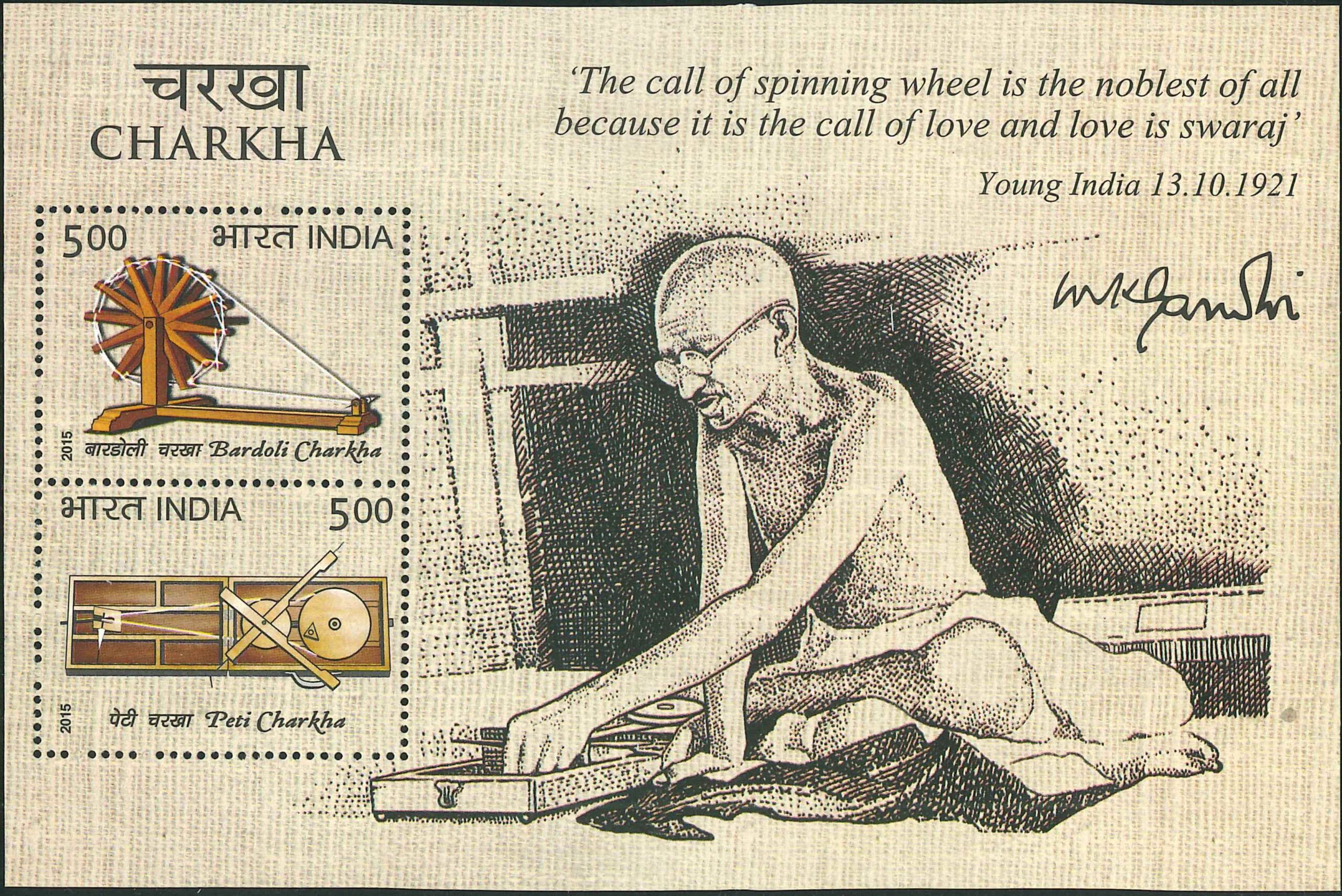
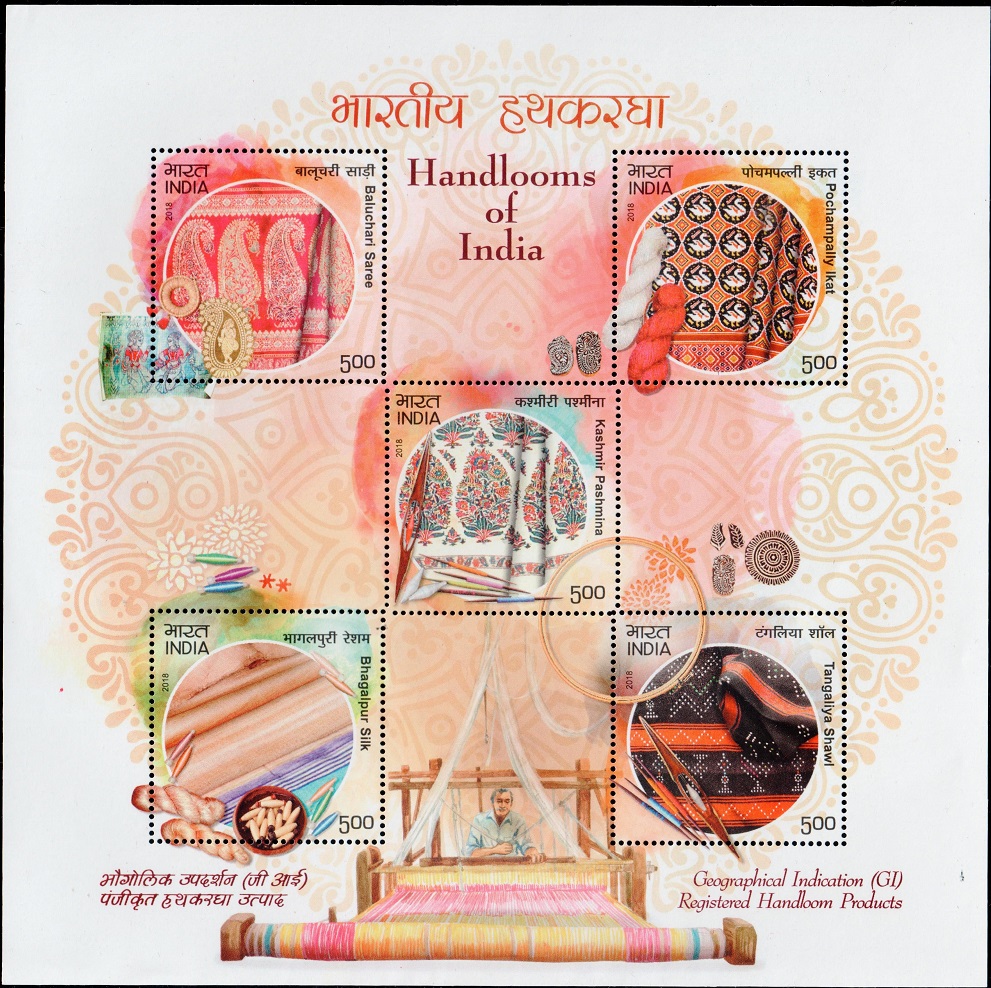
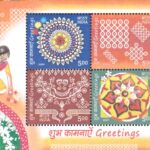
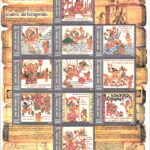
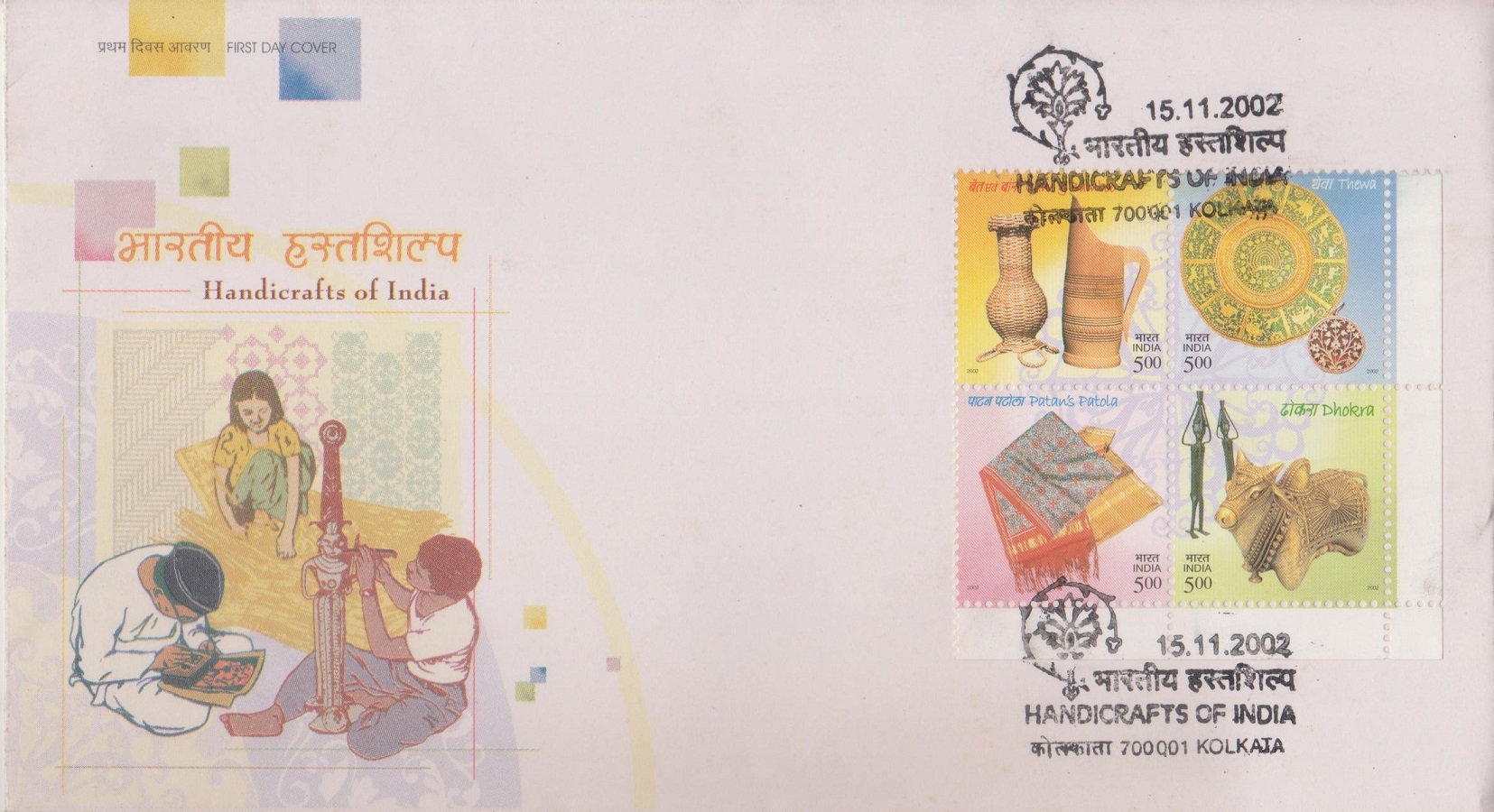
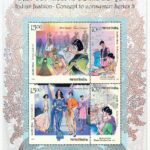
[…] Bengali bride wears a Banarasi saree. Most Bengali brides prefer to wear a red Banarasi saree embellished with gold details or […]
[…] the skilful archer and Arjun’s penance to earn divine weapons, from Mahaballipuram in stamp #8. Kalamkari artists of Andhra Pradesh use fabric to paint scenes from the epics which is depicted in stamp […]